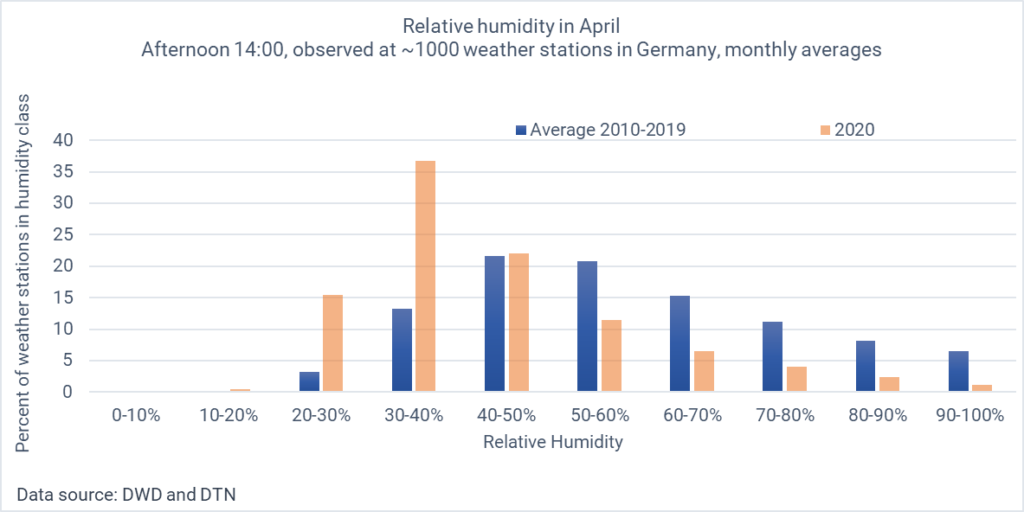April 2020 was exceptionally dry and sunny in large parts of Europe. Already in March little or no rain had fallen in a corridor from eastern France to the North Caucasus. Until the last decade of April high pressure dominated the region, and hardly a drop fell. For weeks, very dry continental air determined the weather in large parts of Europe. Only at the end of the month more humid, Atlantic air masses blew in.
Area of concern for spring crops
During drought in spring, the development of agricultural seeds is getting special attention. And indeed, sowing and emergence of spring crops were significantly hampered by this year’s weather. Therefore, the European Commission classified a wide corridor from eastern France and the Benelux countries to the north of Romania as an ‘area of concern’ (1).
Exceptionally dry air
In addition to the lack of rain itself, the dryness of the air was noticeable. In our graph we compare the relative humidity in April 2020 with the average of the previous 10 years.

We assembled the relative humidity as it was measured each day at 2 pm at ~1000 weather stations in Germany. First, we divided the data into classes (0-10% relative humidity, 10-20% relative humidity, etc.). In the diagram you can see how the measurements distribute over these classes – for the average of the past 10 years (blue) and during this April 2020 (ochre). The difference is striking: This year the frequency distribution has clearly shifted to the dry zone and in 3/4 of all measurements the value of 50% relative humidity was not exceeded.
The last three days of April finally came with rain and more humid air. While the air humidity has now increased again, the precipitation deficit north of the Alpine region is far from balanced.
Observation data archive
When particular weather events need to be assessed and evaluated the comparison with observation and model reanalysis data from previous years helps to assess and classify the situation. MeteoIQ has access to an extensive archive of observation data which we process and interpret with meteorological expertise to answer your questions about unusual weather events.
Sources: JRC MARS Bulletin Vol. 28 No 4: https://ec.europa.eu/jrc/sites/jrcsh/files/jrc-mars-bulletin-vol28-no4.pdf, April 2020
